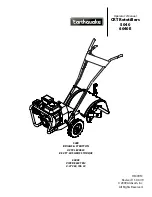
LUBRICATION & MAINTENANCE
LUBRICATION & MAINTENANCE3PT Applicator 813P / 833P
Page 48
LUBRICATION & MAINTENANCE
Lubricating and Maintaining the
Machine Safely
CAUTION: To help prevent serious
injury or death to you or others
caused by unexpected movement, be
sure to service machine on a level
surface.
If the machine is connected to a tractor,
engage the tractor’s parking brake, place the
tractor’s transmission in PARK, shut off the
engine, and remove its key. If the machine is
detached from the tractor, block wheels and
use safety stands to prevent movement.
Lubricant Storage
Equipment can operate at top efficiency only
when clean lubricants are used.
Use clean containers to handle all lubricants.
Whenever possible, store lubricants and
containers in an area protected from dust,
moisture, and other contamination. Store
containers on their side to avoid water and
dirt accumulation.
Make certain all containers are properly
marked to identify their contents.
Properly dispose of all old containers and
any residual lubricant they may contain.
Grease
Greases for Air Temperature Ranges
Use grease based on NLGI consistency
numbers and the expected air temperature
range during the service interval.
IMPORTANT: Some types of grease
thickeners are not compatible with
others. Consult your grease supplier
before mixing different types of
grease.
Alternative and Synthetic Lubricants
Conditions in certain geographical areas
may require lubricant recommendations
different from those printed in this Manual.
Synthetic lubricants may be used if they meet
the performance requirements as shown in
this Manual.
The temperature limits and service intervals
shown in this Manual apply to both
conventional and synthetic lubricants.
Re-refined base stock products may be used
if the finished lubricant meets the
performance requirements.











































